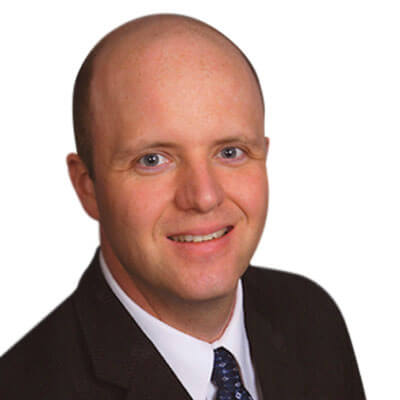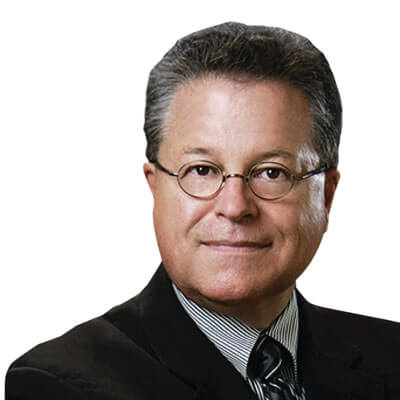

Warren E. Hill, MD, and Yuri McKee, MD, ophthalmic specialists at East Valley Ophthalmology in Mesa, Arizona, USA, discuss the benefits of partnering with a Swiss company deeply committed to innovation and customer centricity
About your practice
Warren Hill: Our practice is a little different from the average, although we are far from unique: frequently, we are sent complex cases that require challenging IOL power calculations, referred from around the US and sometimes internationally. When other surgeons depend on our results, it demands the best diagnostic and surgical equipment. For this reason, we’ve invested much time and resources into researching and choosing the technology we use.
Yuri McKee: While my fellowship training is in corneal and refractive surgery, I also specialize in glaucoma surgery and advanced anterior segment reconstruction, which includes pars plana vitrectomy for vitreous prolapse and, of course, retrieving dislocated IOLs.
On the outside of our building, East Valley Ophthalmology appears to be a standard medical practice, but on the inside, there is a wealth of specialized testing equipment, a surgery center, and a lot of exciting diagnostic and surgical equipment typically found only in large university centers. Working with Warren Hill, an ophthalmology household name, carries many responsibilities. Patients with unique conditions are referred to us from a wide geographical area and arrive expecting cutting-edge technology that provides predictable and consistent, improved outcomes.
What equipment and devices do you use?
Hill: The Lenstar optical biometer is the workhorse of our practice. It provides highly accurate measurements for every aspect of the eye important to an anterior segment surgeon. The Lenstar appeared at a time when biometry needed to change. The Lenstar pushed keratometry to a different level – something we needed to see in our practice. We found that dual- zone autokeratometry provided a new level of accuracy, especially for our toric IOL patients. For each keratometry measurement, the Lenstar shows the reflected images, allowing us to include or exclude any one of six sets to increase the final accuracy. The ability to selectively edit measurements is beneficial for challenging cases. I believe the Lenstar is also ideally suited to routine work, and not just challenging cases. It’s easy to use, doesn’t require a change in thinking, and consistently delivers correct information.
McKee: When we recently expanded our office, we installed a considerable amount of Haag-Streit equipment. We know the company’s slit lamps will last a career. We have the Lenstar biometer and the Octopus perimeter, which are in constant use. Haag-Streit instruments are all intuitive to use and easy to switch between, and we have total faith in their effectiveness, consistency, and durability. On top of this, ergonomics is critical in our clinical spaces. A great deal of time is spent at these stations, and the wrong posture, over many years, can be debilitating. We are using Haag-Streit and Reliance (USA) chairs and stands, which provide an excellent, non-fatiguing platform for our daily practice. We have found a partner in Haag-Streit, not just a supplier: one that sees the whole picture, from cutting-edge innovation in instruments to the wellbeing of the operator.
What’s your experience with Haag-Streit as a partner?
McKee: I find Haag-Streit to be a wonderfully stable, reliable company. I have made several personal connections that have made all the difference in procurement and service. Just one or two contacts at the company can always answer any question or solve any issue. The company’s nature also fosters good employee retention, so I know investing in these relationships also brings a long-term advantage. These personal connections allow me access to the right people when I need to solve issues, but equally, it also gives me a sounding board when I have ideas for improvement or new products. My Haag- Streit connections are always willing to talk enthusiastically about the field. They are wonderfully patient-focused, so I feel that together we can bring significant benefits to the clinic and ophthalmology.
Hill: What sets Haag-Streit apart for me is the company culture. This Swiss company has been in business for a long time and has exceptionally loyal employees. It is also a personable company, not a cold, distant multinational, and this philosophy permeates its products.
We all know that ophthalmology is the “poster child” for innovation, as we see many new technologies successfully introduced and then swiftly become a standard of care. As such, reliability and consistency help us to navigate these constantly changing waters. Haag- Streit excels in both areas, stemming from its long-term involvement with the practitioners and the scientists supporting this field, coupled with care and pride. We greatly value the quality of the devices that begets a long shelf life. We can depend on them day after day, year upon year. Haag-Streit is also a company of forward thinkers. They consider the needs of the industry as far out as they can. To achieve this, they actively engage with us as practitioners and scientists. The company is inclusive and responsive but, importantly, prepared to commit to what others may see as simply expensive “blue-sky” opportunities. For example, Haag-Streit worked with me in a collaborative effort to design a method of performing IOL power calculations that involved an entirely different approach from traditional formulas, instead using the mathematics of artificial intelligence (AI). The study used to create the Hill-RBF IOL power selection method based on AI evolved from this initial conversation. A decade later, the rest is history.
Several years into this study, we began exploring the commonly held but yet-to- be-explored belief that the Han Chinese eye often has anatomic differences compared to the European Caucasian eye. And these differences may influence the accuracy of IOL power selection. It is also felt that these differences may account for disparities in cataract surgery refractive accuracy when comparing these two population groups. Haag- Streit responded to this possibility and committed to finding a solution, even though this had no immediate downstream effect on new equipment sales. Through these experiences, I feel I am working with people who understand what I do, and the many challenges eye care professionals encounter worldwide.
Hill: When you work with Haag- Streit equipment, you can be sure your measurements are good, and you have a good company to back you up, with people you make real connections with. It’s important, as in healthcare, we are all about people.
Yuri McKee on the Haag-Streit Surgical Microscope
When thinking of Haag-Streit, ophthalmologists immediately think of slit lamps; understandably, it’s hard to argue against Haag-Streit having the best quality slit lamp optics. For me, this is also true of the company’s surgical microscopes: their quality, reliability, durability, depth of focus and depth perception, clarity, color reproduction and light transmission provides an “optical experience” that is simply on another level from any other product I have used. Better outcomes are a direct result of having fewer complications, and the superior clarity offered by these microscopes improves our precision, accuracy, confidence and, thus, improves outcomes. Often, we need to focus from the very back of the eye to the front. In surgery, we use the EIBOS 2 non-contact wide- angle retinal viewing system. With a simple flip of the EIBOS 2, we have crystal clear images of the back of the eye. The integrated inverter body is exceptionally slim, allowing simultaneous visualization of the fundus and the incision area, upright in the same orientation. At medium or high magnification, you have the impression of being in the eye instead of just looking at the fundus.
